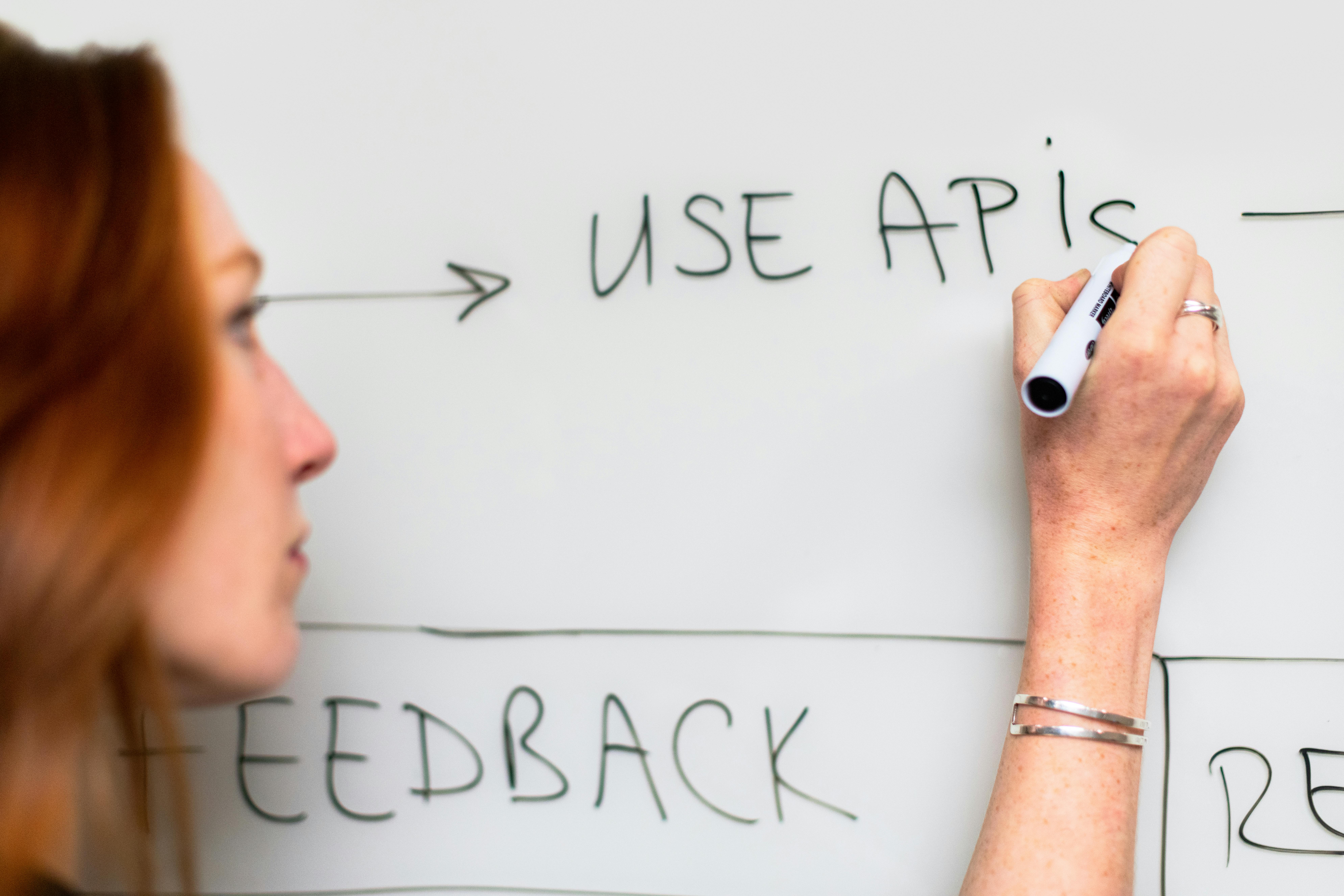
GitLab: The All-In-One DevOps Platform for Streamlined Collaboration
Introduction to GitLab: Explore the Ultimate DevOps Platform
gitlab is a web-based platform that provides a complete DevOps solution for managing and carrying out software development projects. It combines all stages of the software development lifecycle in one interface, allowing teams to collaborate efficiently and streamline workflows.With GitLab, developers can easily version control their code using Git, which tracks changes made to files over time. This ensures that multiple team members can work on the same codebase without overriding each other's changes.
One of the key features of GitLab is its integrated continuous integration and continuous deployment (CI/CD) functionality. This automates the process of building, testing, and deploying software so that teams can ensure the stability and reliability of their applications.
GitLab also offers robust issue tracking capabilities. Users can create, organize, and prioritize issues, assign them to team members, and track their progress. This helps in keeping track of tasks and addressing any possible bugs or improvements needed.
Collaboration is made seamless on GitLab through functionality like merge requests. These enable team members to propose changes to a codebase and request reviews from colleagues before merging them. Discussions and comment threads provide space for discussions, eliminating the need for external communication channels.
Another advantage of using GitLab lies in its built-in container registry and Kubernetes integration. These features allow developers to containerize their applications and manage them in a cloud-native environment.
GitLab supports large-scale collaboration by providing tools for managing permissions, setting up project wikis, allowing public access to repositories, and enabling easy integration with popular third-party platforms like JIRA.
In addition to its self-hosted option, GitLab offers a cloud-hosted SaaS version as well. This gives teams the choice to host their repositories on GitLab's servers or manage their own infrastructure based on their needs and preferences.
Overall, GitLab serves as an all-in-one platform for developers, offering a comprehensive suite of features required for modern software development practices. By providing integrated solutions and enhancing collaboration, it helps teams to deliver higher-quality software with increased speed and efficiency.

GitLab CI/CD: Automating Your Deployment Pipeline for Speed and Efficiency
gitlab CI/CD is an essential feature of the GitLab platform that automates the deployment pipeline, aiding in enhancing the speed and efficiency of software development lifecycles. With CI/CD, developers can consolidate and standardize their workflow, ease collaboration, and deploy new changes rapidly without sacrificing quality.The primary objective of GitLab CI/CD is to automate various stages present within the deployment pipeline. By employing a .gitlab-ci.yaml file in your repository, you can specify instructions to automate building, testing, reviewing, deploying, and monitoring your applications. This file usually resides within your codebase and contains all the configurations necessary for a successful CI/CD pipeline.
One of the key benefits of GitLab CI/CD is its flexibility in executing jobs. It breaks down pipelines into stages (such as build, test, and deploy) where it triggers predefined jobs. These jobs consist of predefined or custom scripts defining necessary tasks.
GitLab CI/CD provides numerous features to customize your pipelines. For instance, you can use tags to control which runners should execute certain jobs based on their defined characteristics. Moreover, it allows parallel execution across multiple runners to reduce building and testing times considerably.
Integrations with external tools are also possible in GitLab CI/CD pipelines. These integrations allow developers to incorporate extensive capabilities in their build/test/deploy phases via various plugins or APIs.
Visibility is another significant advantage offered by GitLab CI/CD. It provides real-time insights through its web interface, offering information about the status and progress of each job and stage throughout the pipeline workflow. Additionally, easily accessible logs enable debugging any issues that may arise within specific steps.
To address possible errors upfront or conduct complex operations during the CI/CD process itself, GitLab offers "artifacts" that permit transferring build outputs between jobs effectively.
When it comes to deployment options, GitLab CI/CD encompasses various strategies. You can deploy your applications on-premises, utilizing Kubernetes, or other cloud platforms by integrating with corresponding tools like Helm charts or Azure Kubernetes Services.
GitLab CI/CD has a comprehensive approach to security. Developers can scan their codebase, containers, and even infrastructure for vulnerabilities with various built-in security scanners. This capability allows for early detection and remediation of security issues before deploying to production environments.
Maintaining and managing pipelines in GitLab CI/CD is simple due to its YAML-based syntax and intuitive interface. Renaming or modifying job specifics requires only simple changes within your .gitlab-ci.yaml file.
Overall, GitLab CI/CD enables not only the automation of software delivery but also scalability, collaboration, and continuous integration practices. It ensures ease of deployment while maintaining a robust pipeline that efficiently aligns with agile development methodologies.

Streamlining Collaboration in Software Development with GitLab
Collaboration is a crucial aspect of software development, allowing teams to work together seamlessly towards building exceptional projects. gitlab is a powerful and comprehensive platform that serves as a consolidated hub for streamlining collaboration in software development. By incorporating various tools and features, GitLab simplifies workflows, enhances team productivity, and fosters efficient collaboration among developers. In this blog, we will explore the ways GitLab enables smooth collaboration for software development projects.Version Control: At the core of GitLab lies its exceptional version control system, based on the distributed version control system (DVCS) called Git. With GitLab, multiple developers can clone a shared repository and make changes concurrently without risk of overwrites or conflicts. Developers can effortlessly pull code from the repository, create branches to develop new features or fixes, and submit merge requests to propose changes. The built-in version control functionality ensures accurate tracking of modifications made by every team member.
Issue Tracking: GitLab offers a built-in issue tracking system that organizes and manages project activities effectively. This issue tracker allows developers to report or assign tasks, prioritize workloads, track progress, set deadlines, discuss issues collaboratively, and reach resolutions efficiently. This cohesive way to manage and resolve project-related matters ensures streamlined communication and keeps everyone's focus aligned.
CI/CD pipelines: Continuous Integration (CI) and Continuous Delivery/Continuous Deployment (CD) are pivotal to agile software development practices. With GitLab's robust CI/CD pipelines, organizations can automate build, test, deploy processes resulting in significant time savings and improved quality assurance. These pipelines create visual workflows where every commit triggers automated tests ensuring that issues are caught early in the development cycle. Moreover, CD pipelines enable automatic application deployment to production environments once specific conditions are met.
Code Review: Effective peer code review is essential for maintaining codebase consistency and high-quality standards. GitLab provides a user-friendly interface designed explicitly for simplified code review processes. With inline commenting, reviewers can provide feedback on specific lines of code, suggesting improvements or pointing out potential issues directly. This methodical review system ensures a thorough evaluation of changes and facilitates collaboration, ultimately enhancing the overall software quality.
Wiki and Documentation: GitLab's integrated wiki feature allows teams to create and maintain extensive project documentation within the same platform. Teams can freely document processes, explanations, guidelines, or any necessary project information in a collaborative manner. This centralized documentation ensures that developers have quick access to relevant information and can collaborate on maintaining accurate and up-to-date project knowledge.
Issue Boards: GitLab's issue boards allow for Kanban-style collaboration and project management. Issue boards offer visual representations of tasks arranged in customizable columns (e.g., "To Do," "In Progress," "Done"). Developers can easily prioritize, assign, or move issues along the board for better tracking and organization. These boards create transparency in workflow status and eliminate the need for traditional manual progress tracking systems.
Integrations: GitLab provides a broad range of integrations with tools that development teams commonly use, ensuring seamless collaboration across various systems. Some popular integrations include chat platforms like Slack or Microsoft Teams to enable real-time notifications and communications among team members. Webhooks connectivity allows triggering external automation or alert systems based on specific events within GitLab.
Conclusion:
GitLab motors collaboration in software development through its comprehensive toolset designed for efficiency and productivity at every stage of the development process. Across version control, issue tracking, CI/CD pipelines, code review, documentation, issue boards, and integrations – GitLab combines essential functionality into one cohesive platform. By following a unified workflow within GitLab, teams can simplify collaboration processes, enhance communication among team members, and collectively work towards building exceptional software products efficiently.

GitLab vs. GitHub: Choosing the Right Platform for Your Development Needs
gitlab and GitHub are two popular platforms used for hosting and managing Git repositories, but they differ in several aspects that make each of them better suited for certain development needs.Firstly, GitLab is an open-source platform, which means its source code is freely available. This allows users to modify the platform to fit their specific requirements. On the other hand, GitHub is a proprietary platform and its source code cannot be modified or self-hosted. This distinction makes GitLab advantageous for organizations that prioritize flexibility and customization.
In terms of deployment options, GitLab provides both a cloud-based SaaS solution called GitLab.com and a self-hosted version called GitLab CE (Community Edition). The self-hosted option allows developers to have complete control over their infrastructure and data security. In contrast, GitHub relies primarily on its cloud-based offering known as GitHub.com. Although GitHub offers an on-premises version, it requires an Enterprise license which entails additional costs.
Another important factor to consider when choosing between GitLab and GitHub is collaboration features. Both platforms provide features such as issue tracking, project boards, and wikis. However, GitLab offers more extensive collaboration tools like built-in continuous integration/continuous deployment (CI/CD) pipelines, container registries, and even an integrated Kubernetes platform. These features make GitLab more attractive for organizations looking for an all-in-one DevOps platform.
One area where GitHub has historically had an advantage over GitLab is its extensive community and marketplace offerings. Being the older of the two platforms, GitHub has a larger user base and incorporates plenty of well-established third-party integrations, such as various project management tools or code quality analysis systems. However, GitLab is catching up quickly by expanding its own marketplace with similar integrations and services.
Data sovereignty may also play a role in choosing the right platform. Since GitLab offers self-hosted options, users can select where their repositories are located, enabling compliance with specific regulations or internal policies. GitHub, in contrast, primarily relies on Microsoft Azure server infrastructure for data storage, which restricts users' ability to control the physical location of their data.
Lastly, pricing is an important factor for decision-making. GitLab's Community Edition is entirely free to use and many organizations find value without needing to upgrade. GitLab also provides paid plans for additional features and support. On the other hand, GitHub offers several package tiers, ranging from free accounts with limited capabilities to more expensive options that unlock enterprise-level features.
In conclusion, choosing between GitLab and GitHub depends on various factors like your organization's requirements for customization, deployment options, collaboration tools, integration ecosystems, data sovereignty needs, and budget considerations. Evaluating these aspects will help you determine whether GitLab or GitHub is the right platform to support your specific development needs.

Mastering GitLab's Issue Tracking for Enhanced Project Management
One key aspect of effective project management is leveraging gitlab's issue tracking capabilities to streamline workflows and enhance collaboration. GitLab's issue tracking system provides a robust set of tools that cater to different levels of project management prowess. Here is some valuable insight into mastering GitLab's issue tracking for enhanced project management:Begin by creating an issue. Issues act as the fundamental units for task and project management in GitLab. They allow you to track and manage different aspects of your project, categorize efforts, and assign tasks to team members.
Labels play a crucial role in organizing and categorizing issues. You can create custom labels to refine issue categorization based on your unique project needs, such as bug, feature request, documentation, etc. Leverage labels to create meaningful views of your project's progress.
Assignees are responsible for executing and completing specific tasks within a project. While creating an issue, assign a team member to ensure clear ownership. Leverage the assigned filter view to track tasks assigned to individuals and review individual contributions. Assignees can even be replaced or reassigned if necessary.
Due dates help prioritize tasks and ensure timely completion. Define due dates for each issue so that you can align them with overall project timelines and deliverables. The "Next action" feature is particularly useful if you have several issues open at once – it helps keep track of critical tasks requiring immediate attention.
Milestones provide a high-level overview of the project's progress and serve as an excellent tool for coordinating parallel efforts. Group related issues under a milestone (e.g., sprint, release), helping visualize progress towards defined goals. Use milestones in combination with due dates for comprehensive planning.
Utilize issue boards to visualize your workflow and manage work progression effectively. Issue boards enable you to create customizable columns corresponding to various stages of work (e.g., To Do, In Progress, Done). Move issues across these columns using drag-and-drop functionality based on their current state.
Good issue descriptions are essential for clear communication and better understanding among team members. Provide a thorough explanation of each issue, including its purpose, context, and any relevant background information. This way, developers can easily comprehend requirements and work efficiently.
Comments facilitate seamless collaboration by enabling conversations within issue threads. Engaging in discussions, clarifying doubts, and providing additional information in these comments promote effective teamwork on complex issues.
Carefully manage the lifecycle of an issue by setting comprehensive priorities and statuses. Use GitLab's priority feature to assign importance levels to different tasks, making it easier to tackle critical issues first. Keep statuses updated (e.g., opened, closed, reopened) throughout the development cycle for accurate tracking.
Leverage GitLab's advanced settings to further tailor your issue tracking workflows according to your project requirements. Utilize features like templates (reusable structured issues) or the ability to restrict issue linking to boost consistency and standardization across your projects.
In summary, mastering GitLab's issue tracking offers remarkable advantages for enhanced project management. With effective utilization of labels, assignees, due dates, milestones, issue boards, comprehensive descriptions/comments, priorities/statuses, and customization settings – you can optimize task management, boost team collaboration, track progress efficiently, and ensure successful project completion.

Setting Up Your First Project in GitLab: A Step-by-Step Guide
gitlab is a popular web-based platform that allows organizations and developers to effectively manage their Git repositories in a collaborative manner. Here, we will provide you with a step-by-step guide on how to set up your very first project in GitLab.- Create an account: Start by visiting the GitLab website and sign up for an account. You can choose between using your existing Google or GitHub accounts or create a new username and password.
- Login to GitLab: Once you have successfully created an account, log in to your newly created GitLab account using your chosen credentials.
- Locate the "New Project" button: On the main dashboard, look for the "+ New Project" button, typically located at the top right-hand corner of the page. Click on it to initiate the project creation process.
- Choose a project name: Enter a unique and meaningful name for your project. Ideally, this should reflect the purpose or nature of your project.
- Set project visibility: GitLab offers different options for controlling project visibility - Public, Internal, or Private. Select the appropriate level based on who you want to grant access to your project.
- Configure project features: In this section, you can enable or disable specific features for your project. These features include Issues, Wiki pages, Merge requests, Pipelines, and more. Customize them based on your project requirements.
- Add collaborators: You can invite collaborators by providing their email addresses or GitLab usernames in the corresponding field. This allows others to contribute to your project.
- Choose a template (optional): GitLab provides several templates for different types of projects such as Ruby, Python, Node.js, etc. You can select an appropriate template if applicable or choose "Blank Project" if you prefer to start from scratch.
- et up repository settings : Determine whether you want to initialize the repository with a README file, the .gitignore template, or an open-source license. Adjust these settings based on your project needs.
- Confirm and create: Double-check all the information you provided, including the project name, collaborators, features settings, and repository options. If everything looks good, click on the "Create Project" button to finalize the project creation process.
- Access your project: After creating your project successfully, you'll be redirected to your project's homepage. Here, you can manage your repository, collaborate with others, and utilize various project management tools offered by GitLab.
That's it! You have successfully set up your first project in GitLab. Now you can begin adding code, collaborating with others, and enjoy the benefits of using GitLab for version control and software development.

Integrating GitLab with Popular Tools: Enhancing Your DevOps Ecosystem
Integration plays a crucial role in maximizing the potential of any tool or platform. When it comes to gitlab, it offers numerous integration options with popular tools, allowing teams to streamline their development workflow and maximize collaboration. Let's delve into some of the key integrations:- Continuous Integration and Deployment (CI/CD) Tools: GitLab seamlessly integrates with renowned CI/CD tools like Jenkins, CircleCI, and GitLab CI/CD itself. Leveraging these integrations, you can automate your build, test, and deployment processes directly from GitLab, providing a streamlined pipeline for delivery.
- Developers' Favorite Editors and IDEs: As developers have their preferred code editors or Integrated Development Environments (IDEs), GitLab offers integrations with commonly used ones such as Visual Studio Code, Sublime Text, and IntelliJ IDEA. These integrations facilitate seamless code reviews, version control, and branch management right from your favorite development environment.
- Kubernetes and Containerization Tools: In the realm of containerization technologies like Docker and Kubernetes, GitLab integration allows managing container repositories, enabling easy creation and hosting of container images with detailed versioning.
- Collaboration and Communication Tools: Integrations with collaboration tools like Slack, Microsoft Teams, and Jira enhance communication between development teams or amongst various stakeholders involved in the software delivery process. Sending notifications, creating issues/tickets straight from GitLab simplifies team collaboration.
- Monitoring and Alerting Systems: To keep a close eye on application performance or uptime, you can integrate GitLab with monitoring systems like Prometheus or Grafana. Such integrations enable real-time alerts and seamless monitoring of application metrics via a unified dashboard.
- Code Quality Analysis Tools: By integrating code quality analysis tools such as SonarQube or Code Climate with GitLab pipelines, you can automatically analyze code quality, identify bugs, and enforce coding standards for continuous improvement.
- DevSecOps Integration: Security is paramount in the modern development landscape. GitLab provides integrations with security tools like Checkmarx or Fortify, allowing you to perform automated security scanning, vulnerability checks for your codebase, and reinforce secure coding practices.
- Cloud Providers and Services: Whether you are using Amazon Web Services (AWS), Google Cloud Platform (GCP), or Microsoft Azure, GitLab integrates with popular cloud providers seamlessly. You can automate deployments, utilize serverless capabilities, and manage infrastructure as code directly from your GitLab pipelines.
Conclusion:
By integrating GitLab with a vast array of tools across different stages of the development process, you unlock the true potential of your DevOps ecosystem. These integrations elevate collaboration, streamline workflows, improve code quality, enhance security practices, and offer seamless automation—ultimately empowering your team to deliver high-quality software efficiently.

Ensuring Code Quality with GitLab Merge Requests and Code Reviews
When it comes to ensuring code quality in software development, gitlab comes equipped with powerful features like Merge Requests and Code Reviews. These tools play a crucial role in maintaining high standards and preventing subpar code from infiltrating the main codebase. Here's everything you need to know about .Merge Requests are an integral part of the GitLab workflow, allowing developers to propose changes and discuss them before they become a part of the codebase. They serve as a platform for collaboration, ensuring that any modifications to the code are thoroughly reviewed before merging. Developers create merge requests when they want to introduce new features, bug fixes, or any other modifications to the existing code.
Once a merge request is opened, it goes through a structured review process involving peer collaboration. This is where the power of GitLab's Code Reviews comes into play. Other team members can review the proposed changes directly in the merge request discussion, examining each aspect of the code thoroughly. They can provide feedback, suggestions, ask questions, and point out any potential issues or improvements that should be made.
An essential aspect of ensuring code quality is enforcing certain controls on developers' workflows. GitLab facilitates this through branch permissions for merge requests. These permissions allow project maintainers to enforce certain rules before accepting any changes. For example, approvals from multiple developers or specific roles can be required before the code can be merged.
As part of the review process, reviewers can make use of GitLab's built-in tools such as inline comments. These comments are highly effective in addressing specific lines or sections of code that need attention or improvements. Reviewers can provide explanations, make suggestions, or highlight potential bugs directly within the codebase itself.
Once all the suggested changes have been made and approved by reviewers, the merge request can be marked as "Approved." This signifies that the proposed changes have met expectations concerning code quality and are ready to be merged into the main codebase.
GitLab also has an array of code review features that allow developers to gain insights into code quality metrics. These metrics can include identifying overcomplicated or duplicated code, ensuring sufficient test coverage, adherence to defined coding standards, and more. By automating assessments and leveraging continuous integration and testing tools, GitLab greatly streamlines the process of maintaining code quality.
Another essential aspect of reviewing code in GitLab is continuous integration. GitLab's CI/CD pipelines enable developers to run automated tests against their proposed changes before merging. This ensures that the changes integrate smoothly with the existing codebase, avoiding any potential regression or compatibility issues.
In conclusion, GitLab's Merge Requests and Code Reviews offer a comprehensive approach to ensuring code quality. They provide a collaborative platform for peer-to-peer discussions, allow for systematic reviews, facilitate the enforcement of desired workflows through permissions and approvals, and provide data-driven insights through code metrics and continuous integration. By leveraging GitLab's powerful tools effectively, development teams can maintain a high level of code quality throughout their projects.

Tips for Managing Large Scale Projects on GitLab
Managing large scale projects on gitlab can be a complex and overwhelming task, but with the right approach and techniques, it can become much more manageable. Here are some essential tips for successful management of large scale projects on GitLab:- Branching Strategy: Adopting a clear and well-defined branching strategy is crucial for managing large scale projects. Consider using a branch-per-feature or branch-per-issue approach to ensure an organized and efficient workflow. This strategy helps in segregating different changes and enables you to track and manage multiple features or issues concurrently.
- Merge Request Workflow: Utilize GitLab's merge request feature to streamline collaboration among developers and simplify code reviews. Encourage using merge requests for every significant change to the project, as they provide a convenient way to discuss, review, and test code before merging into the main branch.
- Maintain a Consistent Directory Structure: Maintaining a consistent directory structure within your repository improves the understandability and discoverability of files for all contributors. Establish naming conventions for directories and files that make locating relevant code easier, especially across different modules or components of your project.
- Documentation is Key: Large scale projects can quickly become difficult to navigate without proper documentation. Encourage developers to document their code thoroughly through comments, README files, and wiki pages. Documenting essential information like configurations, setup instructions, architectural decisions, and best practices ensures newcomers can quickly get up to speed with the project.
- Efficient Issue Tracking: Utilize GitLab's issue tracking system to its fullest potential. Clearly define specific issues or tasks, assign them to team members, and set priorities. Continuously update the status of assigned issues for better project management.
- Continuous Integration/Continuous Deployment (CI/CD) Pipelines: Set up robust CI/CD pipelines within GitLab that automate build, test, and deployment processes for your project. Automated tests ensure code quality at every merge request stage, minimizing the introduction of bugs and enhancing project stability. A smooth CI/CD approach guarantees faster delivery.
- Utilize Code Reviews: Code reviews play a fundamental role in maintaining code quality and reducing technical debt. Encourage team members to conduct thorough code reviews for every merge request, offering constructive feedback to improve the overall codebase and adherence to best practices.
- Monitoring and Alerts: Implement monitoring systems to gather data on application performance, resource utilization, or application crashes/failures. Set up alerts for critical events using GitLab's monitoring capability or third-party integrations to address issues promptly and efficiently.
- Adopt GitLab Features: Familiarize yourself with GitLab's extensive feature set to leverage its full potential. Explore features like issue boards, milestones, epics, and project management features tailored for agile methodologies to facilitate project tracking, collaboration, and planning.
- Regular Communication and Collaboration: Encourage regular communication channels among all project stakeholders through online meetings, chat platforms, or email lists. Maintain an open dialogue about progress, blockers, or any challenges being faced while managing the large scale project on GitLab.
Remember that these are only some key tips among many methods to successfully manage large scale projects on GitLab. It's essential to continuously explore and experiment with new practices tailored to suit your specific project requirements and team dynamics.

Leveraging GitLab’s Security Features to Fortify Your Codebase
In this blog post, we will discuss the various ways you can leverage gitlab's robust security features to strengthen and fortify your codebase. GitLab provides a comprehensive set of tools and functionalities, integrating security seamlessly into the development workflow.Firstly, let's start with "Static Application Security Testing" (SAST). GitLab's built-in SAST feature analyzes your code for potential vulnerabilities, detecting issues such as buffer overflows, SQL injections, or cross-site scripting. It provides developers with in-line vulnerability feedback during the merge request process, ensuring that vulnerabilities are identified and addressed early on.
Next up is "Dynamic Application Security Testing" (DAST). GitLab includes DAST scanners to simulate real-time attacks against deployed applications. By testing the running application for vulnerabilities like injection attacks or insecure configurations, you can catch issues that only surface during runtime. Integrating DAST scanners into the CI/CD pipeline ensures continuous security tests throughout the development lifecycle.
GitLab's "Container Scanning" feature scans Docker containers/container images for known vulnerabilities. This allows you to identify potential security risks in third-party libraries or open-source components used within your containerized applications. The results of these scans are easy to access as an integrated part of your project.
To prevent secrets like API keys or database passwords from being accidentally committed to your repository, GitLab offers "Secret Detection". This feature scans your codebase for sensitive information and notifies you about potential exposures. It helps enforce data protection best practices and ensures that secrets stay hidden.
"Dependency Scanning" is another powerful security mechanism provided by GitLab. By scanning your project's dependencies for known vulnerabilities, it alerts you if any libraries or packages within your code have security flaws or outdated versions. By taking immediate action, you can ensure that these vulnerabilities don't become opportunities for attacks.
GitLab also integrates well with popular "Web Application Firewalls" (WAF). By connecting your project with a WAF, you can mitigate network level attacks and safeguard your web applications. By combining the powers of GitLab and a WAF, you bolster your codebase's security.
Additionally, GitLab enables you to set up "Security Compliance Policies" to monitor and assess the adherence to specific security rules and standards, such as PCI DSS or GDPR. By defining policies and enforcing them across your projects, you can maintain regulatory compliance and protect sensitive data effectively.
Lastly, GitLab takes security seriously throughout its entire development lifecycle. With ongoing vulnerability tracking and prompt patching, they ensure that the platform itself remains secure and up-to-date.
In conclusion, GitLab offers a broad range of features that allow developers to reinforce the security of their codebase. By seamlessly integrating security scanning into the CI/CD pipeline, you can catch vulnerabilities early on, prevent exposures of sensitive information, manage dependencies effectively, and enhance overall code security. Leveraging GitLab's abundant security functionalities helps fortify your codebase against potential threats in today's ever-evolving threat landscape.

Customizing Your Workflow with GitLab’s API and Webhooks
Customizing Your Workflow with gitlab's API and Webhooks
GitLab provides a set of powerful features to customize and automate your workflow using its API and webhooks. With these tools, you can integrate GitLab with other services, build complex automation workflows, and extend GitLab's functionality to cater to your specific needs. Here's an overview of how you can make the most of GitLab's API and webhooks for customizing your workflow:
API - GitLab offers a robust RESTful API that allows you to interact with various elements of GitLab programmatically. You can use the API to perform operations like creating repositories, managing branches, configuring project settings, tracking issues, accessing merge requests, and much more. Through this API, you can integrate GitLab with external systems, create custom interfaces for interacting with GitLab programmatically or build advanced automation scripts.
Webhooks - GitLab webhooks enable real-time notifications and trigger actions in external systems based on events occurring within GitLab. By setting up webhooks, you can send HTTP POST requests to specified URLs whenever specific events occur, such as pushing code to a repository, opening an issue or merge request, or making any changes to a project. These events can be used to trigger automated actions like building software artifacts, deploying applications, sending notifications via messaging platforms like Slack or Microsoft Teams, and updating external issue trackers.
Using the API and webhooks together - By combining the API and webhooks, you can create dynamic workflows that respond to events in GitLab while utilizing external services or building custom integrations. For example, you could set up a webhook event that triggers a build pipeline in Jenkins whenever code is pushed to a specific branch on GitLab. Or you could automatically tag an issue in an external issue tracker whenever certain labels are applied to a issue within GitLab.
Third-party integrations - Apart from custom integration options, GitLab also provides built-in integrations with popular third-party tools and services through API clients and predefined integrations. For instance, you can integrate GitLab with CI/CD platforms like Jenkins or Travis CI, code quality tools like SonarQube, cloud providers like AWS or Google Cloud, notification services like Slack or Email, and more. These ready-to-use integrations make it easier to automate your workflows by leveraging GitLab's integration capabilities.
Extending GitLab's functionality - In addition to using the API and webhooks to integrate external systems, you can also extend GitLab's base functionality by creating custom API endpoints called GitLab plugins. Plugins enable you to introduce new features, automate specific actions, or modify existing behavior within GitLab itself. By extending GitLab with plugins, you can tailor the platform to fit your organization's unique requirements and streamline your workflow even further.
In conclusion, GitLab's API and webhooks provide powerful ways to customize your workflow and integrate GitLab with various external tools and systems. Whether it's automating repetitive tasks, integrating with third-party services, or extending GitLab's functionality itself, these capabilities allow you to create a highly tailored environment that boosts productivity and agility within your development process.

Implementing Automated Testing Strategies in Your GitLab CI/CD Pipeline
Automated testing plays a vital role in ensuring the quality and reliability of software applications. By integrating automated tests into your gitlab CI/CD pipeline, you can streamline the development process and catch potential issues early on.GitLab CI/CD provides a flexible and comprehensive framework for building, testing, and deploying code. Within this framework, you can implement various automated testing strategies to verify the functionality, performance, and security of your software. Here are some key considerations when implementing automated testing in GitLab CI/CD:
- Test Types: Choose the appropriate types of tests for your application's needs. This may include unit tests, integration tests, end-to-end tests, or performance tests. Each test type serves a specific purpose and helps cover different aspects of your application's functionality.
- Test Frameworks: Selecting the right test frameworks compatible with GitLab is crucial. Depending on your programming language or technology stack, you may use popular frameworks like JUnit, PyTest, RSpec, or Jasmine to create and execute your tests.
- Configuration: Configure your GitLab CI/CD pipeline to include separate stages or jobs for each test type. This division allows you to control which tests run at specific stages of the pipeline. For example, running faster unit tests before slower integration or end-to-end tests can help reduce waiting time.
- Test Environment: Ensure your test environment closely resembles the production environment where your application will be deployed. This means providing necessary infrastructure components such as databases or third-party services to mimic real-world conditions.
- Parallelization: Leverage parallel execution to accelerate your automated testing process. Splitting your test suite across multiple runners allows you to run multiple tests simultaneously, reducing overall testing time and increasing developer productivity.
- Code Coverage: Measure code coverage to evaluate the effectiveness of your automated tests effectively. GitLab has built-in support for code coverage metrics using popular tools like JaCoCo, Istanbul, or simplecov. Analyzing code coverage helps identify gaps and improve your test suite.
- Testing Critical Paths: Prioritize testing critical paths and high-risk areas in your application. By focusing on the core features or functionalities that require robust validation, you can build a strong automated testing strategy efficiently.
- Continuous Integration and Deployment: Integrate automated tests with your GitLab CI/CD pipeline's continuous integration (CI) and continuous deployment (CD) stages. Run tests early and often during the development process to detect bugs or issues quickly.
- Feedback Mechanism: Establish a feedback mechanism that notifies developers about test results. Utilize GitLab's system of merging merge requests or generating reports to provide granular details on test failures. This allows developers to address issues promptly.
- Dockerization: Utilize Docker containers within GitLab CI/CD pipeline to create reproducible testing environments. Docker enables easy isolation and portability of your tests, ensuring consistency and reliability across various testing stages.
- Security Testing: Enhance your automated testing by integrating security scans into the pipeline. Leverage GitLab's advanced security features like Static Application Security Testing (SAST) or Dynamic Application Security Testing (DAST) to identify vulnerabilities or security flaws in your application.
- Test Data Management: Ensure appropriate test data management practices to maintain consistency and accuracy during testing. Generate realistic and reliable data sets that simulate real-world scenarios for thorough testing of your application's behavior.
Implementing automated testing strategies in your GitLab CI/CD pipeline empowers your development team to deliver high-quality software with confidence. With thorough testing, you can eliminate manual errors, reduce technical debt, and establish a stable release process while boosting overall efficiency and productivity in your development lifecycle.

Exploring GitLab’s Container Registry and Its Benefits for DevOps Teams
gitlab, a popular web-based Git repository manager, provides various powerful features to streamline the software development process. One of its notable functionalities is the built-in Container Registry, which offers tremendous benefits for DevOps teams. In this blog post, we will delve into GitLab’s Container Registry and explore how it enhances collaboration, simplifies deployment, and boosts overall productivity.The Container Registry in GitLab is a secure and scalable solution for storing Docker images and other container artifacts. It acts as a centralized repository to distribute and manage container images within an organization. Here are some key advantages of utilizing GitLab’s Container Registry:
- Seamless Integration: GitLab's Container Registry seamlessly integrates with the already familiar Git workflow. Developers can effortlessly push their Docker images alongside their source code repositories. This seamless integration eliminates the need for additional tools and simplifies the development process for DevOps teams.
- Improved Collaboration: By storing container images within GitLab's Container Registry, developers can easily share and manage their images across different teams or projects. This facilitates smoother collaboration among team members, enabling them to work together efficiently on deploying applications or implementing changes.
- Faster Application Deployment: With containers gaining popularity in the world of software development, quick application deployment is crucial. GitLab's Container Registry ensures that developers have access to reliable and up-to-date container images at all times. This accelerates deployment processes by reducing any downtime caused by configuration or Docker image acquisition issues.
- Control and Security: The Container Registry provides enhanced control over who can access container images. Organizations can define access policies based on user roles or groups, ensuring only authorized individuals have permission to pull or push images. This level of control guarantees that confidential or vulnerable container images are not accessible by unauthorized individuals.
- Built-in CI/CD Compatibility: GitLab's Container Registry seamlessly integrates with its Continuous Integration and Continuous Deployment (CI/CD) pipeline. This integration enables automatic image building and deployment, eliminating the need for manual configuration and reducing the chance for human errors during the release process.
- Deployment Versatility: Whether you prefer deploying your applications on-premises or on cloud platforms like AWS, Azure, or Google Cloud, GitLab's Container Registry provides flexibility. Developers can push container images to the registry and effortlessly deploy them to their desired infrastructure with ease.
- Version Control and Rollbacks: GitLab’s Container Registry ensures that container images are treated as version-controlled artifacts. Developers can easily track changes made to specific images using Git's robust version control capabilities. If needed, rollbacks to previous image versions can be achieved swiftly, minimizing potential deployment issues.
- Extensibility through APIs: Developers looking to extend GitLab's capabilities can leverage its APIs to build custom integrations or automate container image management workflows. The APIs provided by GitLab facilitate customization according to specific organizational needs, making it a highly flexible solution.
Overall, GitLab's Container Registry streamlines container management, improves collaboration among DevOps teams, and simplifies the deployment of applications. Leveraging its key benefits such as seamless integration, control and security, CI/CD compatibility, and extensibility through APIs can significantly enhance productivity and efficiency within organizations embracing DevOps practices.
As containerization continues to revolutionize modern software development practices, GitLab's Container Registry has become an indispensable tool for forward-thinking DevOps teams seeking streamlined processes and enhanced collaboration in their projects.

How to Effectively Use GitLab Boards for Agile Project Management
gitlab Boards provide an excellent platform for managing agile projects efficiently. With a variety of features designed specifically for project management, GitLab enables teams to streamline their agile workflow and collaborate effectively. Here are some tips for effectively utilizing GitLab Boards for Agile Project Management:- Board Setup: Begin by creating a new board on GitLab as per your project requirements. Configure columns to represent different stages/tasks of your project, such as "Todo," "In Progress," "Review," and "Done." These columns visualize the project status and help track each task's progress.
- Issue Cards: Each task or user story is represented as an issue card in the board. Add detailed descriptions, assignees, due dates, and other relevant project information to these cards. By keeping the information up-to-date, everyone can easily access and understand the scope and progress of each task.
- Assigning Tasks: Assign relevant team members to individual issue cards to identify their responsibilities clearly. This helps distribute tasks across the team efficiently and ensures accountability.
- Labels: Use labels intuitively to categorize tasks and issues based on priority, type, or any other custom requirement. For instance, you may use labels like "Bug," "Feature," or "High Priority" to create a visual distinction between different tasks without overwhelming the board.
- Milestones: Set milestones to track major deadlines or deliverables throughout the project lifecycle. Organizing tasks under respective milestones provides a clear overview of project progress with a timeline perspective.
- Weightage and Estimated Time: To manage workloads and estimate the time required for each task, utilize weightage (often expressed in Story Points) and estimated time values for each issue card. This allows planning future iterations effectively and aligning resources accordingly.
- Continuous Monitoring: Keep an eye on the boards regularly to maintain visibility over ongoing workstreams. Ensure transparency by updating statuses, moving issue cards across columns as tasks progress or facing any hurdles.
- Collaborate and Communicate: Utilize GitLab's robust commenting system to facilitate effective collaboration within the project team. Teammates can discuss specific issues, provide updates, or seek clarification, keeping everyone informed and encouraging open communication.
- Board Views: GitLab offers different board views, such as Scrum and Kanban, giving flexibility in managing projects with different methodologies. Experiment with these views to discover what suits your team and workflow best.
- Automation and Integrations: GitLab offers automation through webhooks, allowing seamless integration with external tools like Slack or project management software. Setting up automated notifications and task updates can further enhance team productivity.
- Agile Reports: Leverage GitLab’s reporting capabilities to gain insights into team performance, cycle times, or backlog metrics. These reports help identify bottlenecks, optimize workflows, and promote continual improvement.
Using GitLab Boards for Agile Project Management enhances team collaboration, improves transparency across the project, and facilitates efficient decision-making. Adopting these tips will enable your team to make the most of GitLab's robust project management capabilities while practicing Agile methodologies effectively.

Transitioning to GitLab from Other VCS Systems: A Smooth Migration Strategy
Switching from other Version Control Systems (VCS) to gitlab can be a seamless process if you strategize your migration effectively. Whether you are coming from SVN, Mercurial, or another Git platform, here are some important considerations and recommended steps to ensure a smooth transition:- Understand Your Current VCS System:
Before diving into the migration process, take the time to understand how your existing VCS system operates. Familiarize yourself with the terminology, version control workflows, branches, and any specific features tied to that system. - Evaluate GitLab's Features:
Explore the features and capabilities of GitLab thoroughly. This will help you identify similarities and differences between your current VCS system and GitLab. Understanding GitLab's unique strengths will allow you to leverage its full potential. - Plan Your Transition Strategy:
Developing a well-defined transition plan significantly contributes to a successful migration. Some aspects to consider include:
- - Define an appropriate timeline for the migration process.
- - Make an inventory of repositories from your current VCS system.
- - Determine whether any data or history needs to be preserved and establish methodologies for achieving this.
4. Communicate and Involve Your Team Members:
Smooth migrations require transparent communication with the team involved in the transition process. Keep everyone informed about plans, timelines, and expected changes. Encourage open discussion among team members to address any concerns or questions they might have.
5. Choose the Right Transition Approach:
Mainly two strategies can be used while transitioning:
- - Big Bang Migration: In this approach, migrate all repositories simultaneously in a shorter timeframe. It requires thorough testing but minimizes operating two wide-ranging systems.
- - Incremental Adoption: With this approach, migrate repositories gradually while operating both systems separately. While providing more control and lower risks, it extends the timeline for full migration.
6. Set Up GitLab Properly:
Install and configure GitLab while aligning with your organization's needs. Consider factors like development methodologies, security, access controls, and integration requirements. Take advantage of GitLab's comprehensive documentation and support resources for assistance.
7. Prepare for Repository Migration:
As per the chosen strategy, commence migrating repositories from your old VCS system to GitLab. Ensure that you address git specific issues such as choosing the right branches or resolving branch name conflicts before starting the migration.
8. Train Your Team:
Conduct training sessions or workshops to bring your team up to speed on GitLab's features and workflows. Encourage employees to make use of educational resources like documentation, tutorials, and videos. Promote best practices around branching models like GitFlow or trunk-based development.
9. Implement Integration and Automation:
Leverage GitLab's extensive integrations to streamline your development stack and automate workflow processes. Integrate CI/CD pipelines, bug tracking tools, code review systems, and other tools to amplify productivity.
10. Gradually Decommission the Old VCS System:
Once all the repositories have been successfully migrated and your team has adapted to GitLab effectively, decommission your previous VCS system. Ensure that you archive any necessary data or artifacts for future reference or compliance purposes.
By following this comprehensive migration strategy tailored to your specific needs, you can smoothly transition to GitLab from any other VCS system without significant interruptions to your development processes. Effective planning, communication, education, and utilizing GitLab's powerful features will set you up for success in embracing this robust version control platform.

Best Practices for Managing Your Documentation on GitLab
When it comes to managing your documentation on gitlab effectively, there are several best practices you can adopt:- Organize your documentation: Create a clear structure by breaking down your documentation into logical sections or categories. Use folders, subfolders, and Markdown files to organize and store the content systematically.
- Use descriptive filenames: Give meaningful and descriptive names to your Markdown files before pushing them to GitLab. This makes it easier for contributors and users to locate the relevant document quickly.
- Leverage GitLab's version control: Take advantage of GitLab's built-in version control capabilities to manage changes and track revisions in your documentation. Commit and push incremental updates regularly, enabling effective collaboration among contributors.
- Utilize features like branching and merging: GitLab's branching feature allows you to create separate branches specifically for documentation work. This enables multiple teams or individuals to work on different parts simultaneously without conflicts. Merge requests ensure a smooth integration of changes back into the main document.
- Enable collaboration and code review: Encourage team members or contributors to review each other's documentation using merge requests in GitLab. This ensures quality control and boosts collective knowledge sharing within the team.
- Add detailed commit messages: When making changes or additions to your documentation, provide concise but informative commit messages. This helps everyone understand the context of the modifications made in each commit.
- Establish a review process: Implement a review process for your documentation to ensure accuracy, clarity, and adherence to established style guidelines. Allow team members or subject matter experts to review, suggest edits, or raise questions before merging changes into the main branch.
- Integrate automated CI/CD checks: Configure relevant CI/CD (Continuous Integration/Continuous Deployment) pipelines that perform automated checks on your documentation. These checks can include spell-checking, syntax validation, adherence to markdown formatting standards, and more. By running these checks, you can maintain consistency and avoid common documentation errors.
- Maintain a changelog: Create a changelog file or dedicate a section to document significant additions, updates, or bug fixes in your documentation. This can serve as a handy reference for users and contributors to keep track of the evolving content.
- Utilize GitLab's Wiki feature: GitLab provides a dedicated Wiki feature that allows you to create user-friendly, versioned wikis for your project's documentation separately. You can use this feature for more accessible end-user documentation or supplementary articles alongside the main documentation repository.
- Use descriptive commit tags: Apply relevant tags or labels while committing changes to easily categorize and search for specific types of commits. These tags might include "bug fixes," "feature additions," "content restructure," or any custom labels you find useful.
- Regularly update and deprecate information: Review your documentation periodically for relevancy and accuracy. Update outdated content, correct errors, and deprecate information that is no longer valid or supported. Communicate these deprecations clearly to users, minimizing confusion and avoiding reliance on obsolete content.
- Encourage external contribution: Allow external contributors to suggest edits or additions by enabling merge requests from the wider community. This fosters collaborative contributions and enrichment of the overall documentation while ensuring quality through proper review processes.
By following these best practices, you can effectively manage your documentation on GitLab, maintain version control, encourage teamwork and collaboration, improve content quality, and enhance the overall user experience.

Utilizing GitLab for Open Source Projects: A Complete Guide
When it comes to managing and collaborating on open source projects, gitlab serves as an invaluable platform that offers a plethora of features and tools. Whether you are a seasoned coder or just starting with open source, leveraging GitLab can significantly enhance your project's development processes. In this complete guide, we will explore various aspects and functionalities of GitLab in the context of open source projects.Version Control Management:
GitLab is primarily built around the usage of Git, a distributed version control system. With GitLab, you can effortlessly manage your project's codebase by creating repositories to store and track its versions. Through simple commands like git clone, git add, git commit, and git push, you can establish a seamless workflow for your open source project.
Easy Collaboration and Issue Tracking:
GitLab offers an intuitive interface that enables effortless collaboration among contributors. You can invite other developers to join your project and grant them access to specific repositories. The platform facilitates seamless communication through issue tracking. By creating issues, users can highlight bugs, feature requests, or ideas within the project. Participants can also comment on these issues, facilitating discussions and resolving problems efficiently.
Merge Requests:
One of the essential components of working wi